Lowik Chanussot
The 2021 Image Similarity Dataset and Challenge
Jul 01, 2021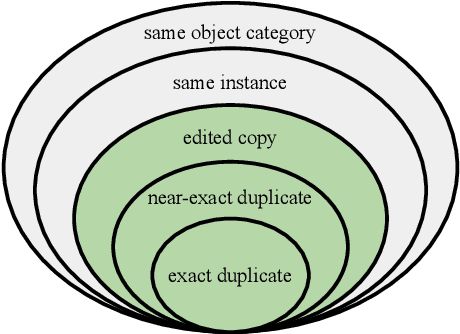
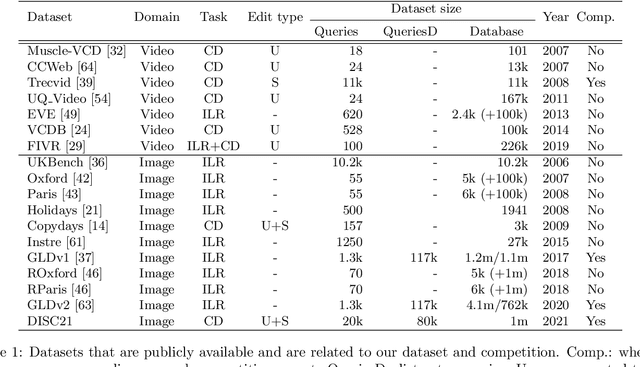
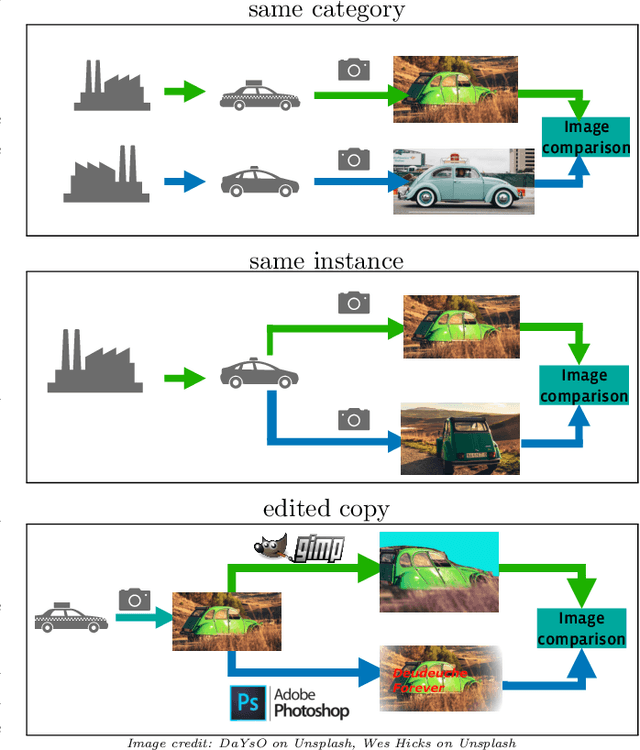

Abstract:This paper introduces a new benchmark for large-scale image similarity detection. This benchmark is used for the Image Similarity Challenge at NeurIPS'21 (ISC2021). The goal is to determine whether a query image is a modified copy of any image in a reference corpus of size 1~million. The benchmark features a variety of image transformations such as automated transformations, hand-crafted image edits and machine-learning based manipulations. This mimics real-life cases appearing in social media, for example for integrity-related problems dealing with misinformation and objectionable content. The strength of the image manipulations, and therefore the difficulty of the benchmark, is calibrated according to the performance of a set of baseline approaches. Both the query and reference set contain a majority of "distractor" images that do not match, which corresponds to a real-life needle-in-haystack setting, and the evaluation metric reflects that. We expect the DISC21 benchmark to promote image copy detection as an important and challenging computer vision task and refresh the state of the art.
The Open Catalyst 2020 Dataset and Community Challenges
Oct 20, 2020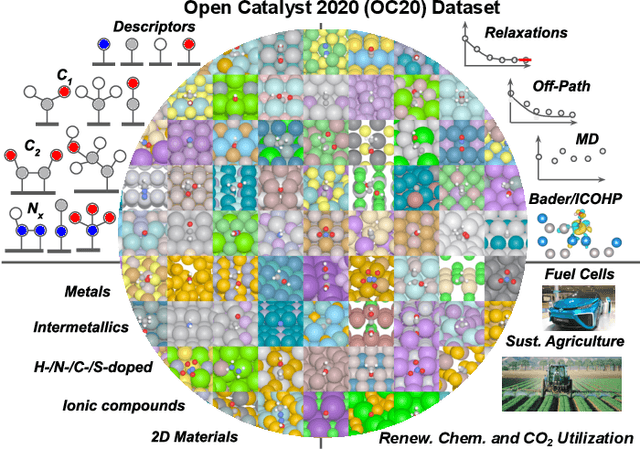

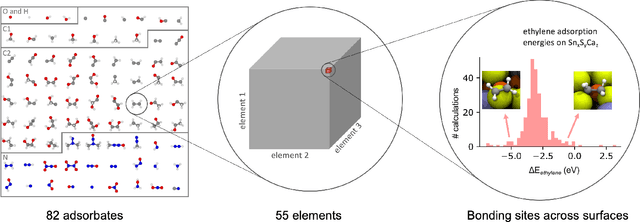
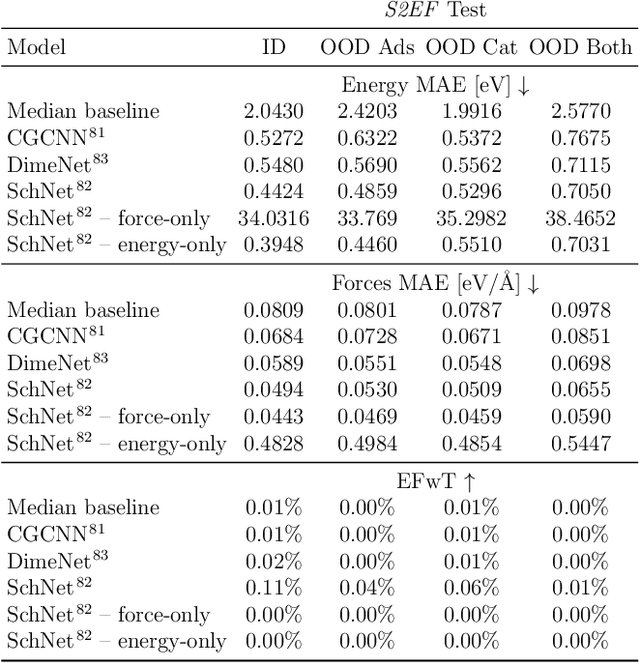
Abstract:Catalyst discovery and optimization is key to solving many societal and energy challenges including solar fuels synthesis, long-term energy storage, and renewable fertilizer production. Despite considerable effort by the catalysis community to apply machine learning models to the computational catalyst discovery process, it remains an open challenge to build models that can generalize across both elemental compositions of surfaces and adsorbate identity/configurations, perhaps because datasets have been smaller in catalysis than related fields. To address this we developed the OC20 dataset, consisting of 1,281,121 Density Functional Theory (DFT) relaxations (264,900,500 single point evaluations) across a wide swath of materials, surfaces, and adsorbates (nitrogen, carbon, and oxygen chemistries). We supplemented this dataset with randomly perturbed structures, short timescale molecular dynamics, and electronic structure analyses. The dataset comprises three central tasks indicative of day-to-day catalyst modeling and comes with pre-defined train/validation/test splits to facilitate direct comparisons with future model development efforts. We applied three state-of-the-art graph neural network models (SchNet, Dimenet, CGCNN) to each of these tasks as baseline demonstrations for the community to build on. In almost every task, no upper limit on model size was identified, suggesting that even larger models are likely to improve on initial results. The dataset and baseline models are both provided as open resources, as well as a public leader board to encourage community contributions to solve these important tasks.
An Introduction to Electrocatalyst Design using Machine Learning for Renewable Energy Storage
Oct 14, 2020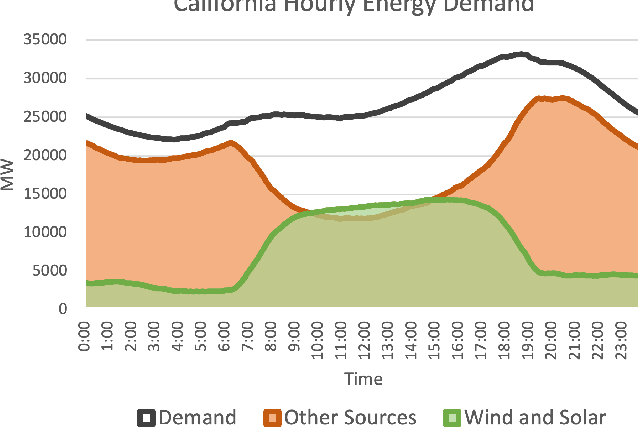
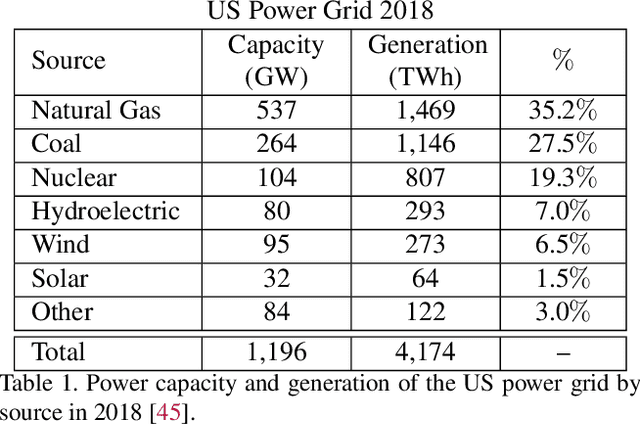
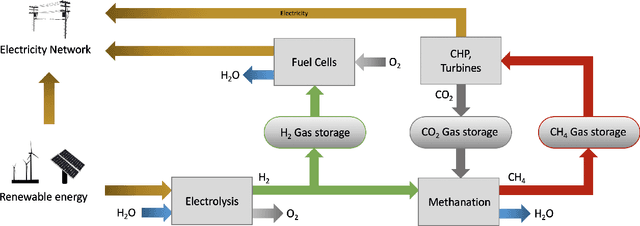

Abstract:Scalable and cost-effective solutions to renewable energy storage are essential to addressing the world's rising energy needs while reducing climate change. As we increase our reliance on renewable energy sources such as wind and solar, which produce intermittent power, storage is needed to transfer power from times of peak generation to peak demand. This may require the storage of power for hours, days, or months. One solution that offers the potential of scaling to nation-sized grids is the conversion of renewable energy to other fuels, such as hydrogen or methane. To be widely adopted, this process requires cost-effective solutions to running electrochemical reactions. An open challenge is finding low-cost electrocatalysts to drive these reactions at high rates. Through the use of quantum mechanical simulations (density functional theory), new catalyst structures can be tested and evaluated. Unfortunately, the high computational cost of these simulations limits the number of structures that may be tested. The use of machine learning may provide a method to efficiently approximate these calculations, leading to new approaches in finding effective electrocatalysts. In this paper, we provide an introduction to the challenges in finding suitable electrocatalysts, how machine learning may be applied to the problem, and the use of the Open Catalyst Project OC20 dataset for model training.
Unsupervised Translation of Programming Languages
Jun 05, 2020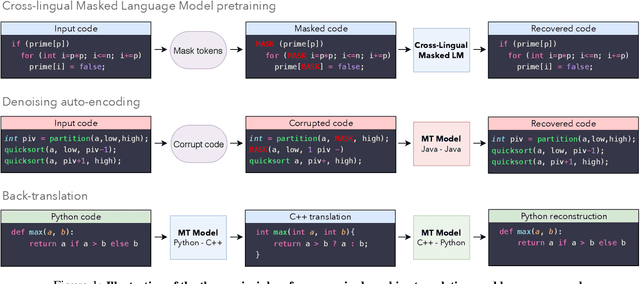



Abstract:A transcompiler, also known as source-to-source translator, is a system that converts source code from a high-level programming language (such as C++ or Python) to another. Transcompilers are primarily used for interoperability, and to port codebases written in an obsolete or deprecated language (e.g. COBOL, Python 2) to a modern one. They typically rely on handcrafted rewrite rules, applied to the source code abstract syntax tree. Unfortunately, the resulting translations often lack readability, fail to respect the target language conventions, and require manual modifications in order to work properly. The overall translation process is timeconsuming and requires expertise in both the source and target languages, making code-translation projects expensive. Although neural models significantly outperform their rule-based counterparts in the context of natural language translation, their applications to transcompilation have been limited due to the scarcity of parallel data in this domain. In this paper, we propose to leverage recent approaches in unsupervised machine translation to train a fully unsupervised neural transcompiler. We train our model on source code from open source GitHub projects, and show that it can translate functions between C++, Java, and Python with high accuracy. Our method relies exclusively on monolingual source code, requires no expertise in the source or target languages, and can easily be generalized to other programming languages. We also build and release a test set composed of 852 parallel functions, along with unit tests to check the correctness of translations. We show that our model outperforms rule-based commercial baselines by a significant margin.
Modular Traffic Sign Recognition applied to on-vehicle real-time visual detection of American and European speed limit signs
Oct 07, 2009



Abstract:We present a new modular traffic signs recognition system, successfully applied to both American and European speed limit signs. Our sign detection step is based only on shape-detection (rectangles or circles). This enables it to work on grayscale images, contrary to most European competitors, which eases robustness to illumination conditions (notably night operation). Speed sign candidates are classified (or rejected) by segmenting potential digits inside them (which is rather original and has several advantages), and then applying a neural digit recognition. The global detection rate is ~90% for both (standard) U.S. and E.U. speed signs, with a misclassification rate <1%, and no validated false alarm in >150 minutes of video. The system processes in real-time ~20 frames/s on a standard high-end laptop.
 Add to Chrome
Add to Chrome Add to Firefox
Add to Firefox Add to Edge
Add to Edge